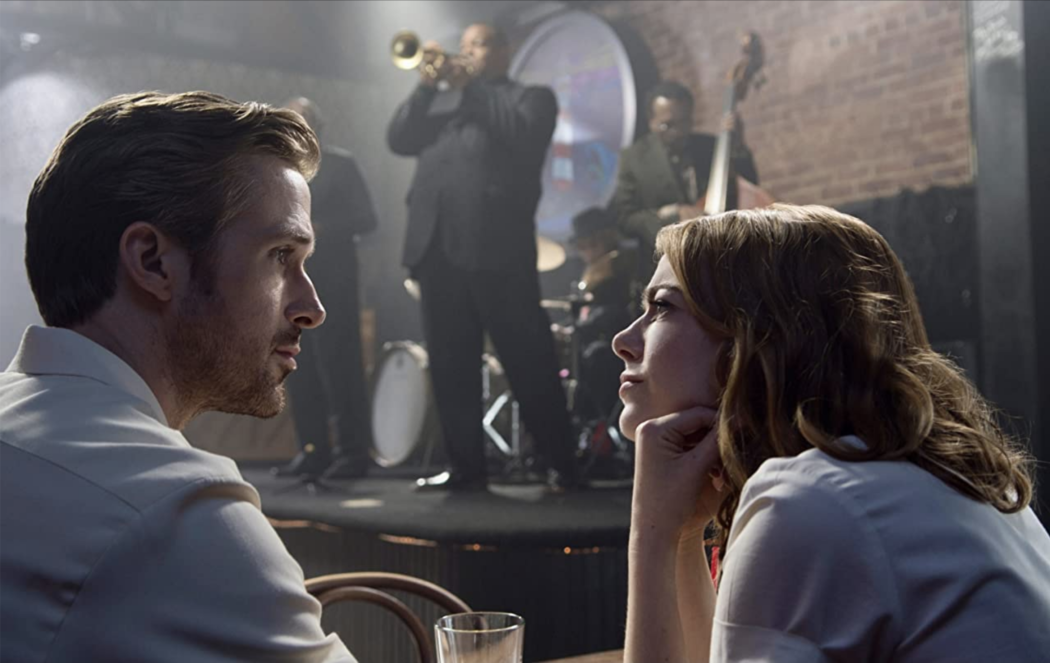Opinion: La La Land & whitewashing in Hollywood
The film “La La Land” was nominated for best picture and was praised for its actors’ abilities, an homage to the golden age of film. The movie showed two artists trying to navigate their dreams and true love, but forced to choose between the two. While the film has great cinematography, set design and acting, it put me off for a few reasons.
Firstly, it idolizes a time in Hollywood where diversity was a token. While I’m sure the filmmakers did not intend for this, that doesn’t excuse character choices.
Secondly, the male lead is a white jazz musician that misses the point as he whitesplains jazz. In an article by Rebecca Farley for Refinery29, she writes, “[They] have pointed out that the film seems to reduce jazz to a pop culture trinket, a fun fact for the characters to toy with.” There is homage paid to the golden age of cinema, but not to the culture, history or pioneers of jazz.

Portrait of Tommy Potter, Charlie Parker, Max Roach (almost hidden by Parker), Miles Davis, and Duke Jordan (from left to right), Three Deuces, New York, N.Y. William P. Gottlieb, Public domain, via Wikimedia Commons
Jazz music originated around the late 1800s in New Orleans, Louisiana, with African-American musicians like Buddy Bolden who started the first jazz band in 1895. The jazz people know today may have truly been invented around 1917 when Nick LaRocca and his band created classics like “Livery Stable Blues.” Louis Armstrong was an influential jazz trumpeter and songwriter who started his career in the late 1910s, taking off to write multiple novels about his life and his music.
Ella Fitzgerald, Miles Davis, Duke Ellington and Billie Holiday are all recognizable names in the music industry. Their works have accumulated to influence the creation and inspiration of Rock’n’Roll towards the end of the 1960s. Other famous artists include Charles Mingus, Dizzy Gillespie, Thelonious Monk, Charlie Parker and Herbie Hancock.
As jazz, and by extension Black media, grew in popularity, Black actors and performers were often barred from telling their own stories. On top of this, Black characters were often portrayed by white actors wearing blackface. In the 1927 film, “The Jazz Singer,” the white protagonist aims to be a jazz musician but pretends to be a Black person in that particular genre of music. It’s just one example of the absence of diversity in the earlier days of film that saw people of color as a tool.

Portrait of Muriel Rahn in the title role of the original Broadway production of Carmen Jones (1944) Carl Van Vechten, Public domain, via Wikimedia Commons
Since the 1910s, films portraying primarily Black actors have been produced for Black audiences, but fewer than 100 of these films have survived since the 50s. “Race films,” as the genre was dubbed, are described by Allyson Nadia Field for The Criterion Collection as films that, “…instead of using their Black subjects as props or objects of ridicule, these films placed their lives front and center.” Movies such as “Moon Over Harlem” and “Carmen Jones,” were overshadowed by the white supremacy of Hollywood, and were unfortunately drowned in racist and sexist cliches, and stereotyped by white audiences.
Today, the Black Lives Matter movement has made a tremendous impact on politics, social regulation, education, safety and media, including Hollywood. It’s not perfect, but films and television shows like “Black Panther,” “Crazy Rich Asians,” “Coco,” “Remember the Titans,” “Moana,” “42” and “Get Out,” have provided more representation.
Not all of these films are about race, but rather represent and normalize non-white characters and their experiences. It also helps to provide white audiences with a glimpse into genres and themes that they are not normally encouraged to explore in order to open up their minds and hearts to difference.
Over the years, the development of representation has improved. More and more films don’t only portray diverse characters, but stories about race, culture and history in today’s modern world. “La La Land” didn’t necessarily compromise their story by casting white actors to play the two main roles, but the focus on a single aspect of Black culture without full homage is a little tokenistic.
“La La Land” was trying to create a nostalgic atmosphere, but many confuse nostalgia with simplicity. Things have never been simple, especially for minorities in music, movies and all walks of life. Race films have helped develop civil rights with representation, impacting Hollywood and other forms of media that affect all of us every day.
Movies like “La La Land” have yet to understand the purpose of Black cinema, and its importance to all forms of art. We should never forget our history, good and bad, black and white, obscure and mainstream, in film and real life, because it all plays a part in what we choose to create today.

Megan Cowdell is a freshman opinion columnist studying for a bachelor’s in Communications. She loves music, reading and wants to write books for a living.
megan.cowdell@usu.edu

